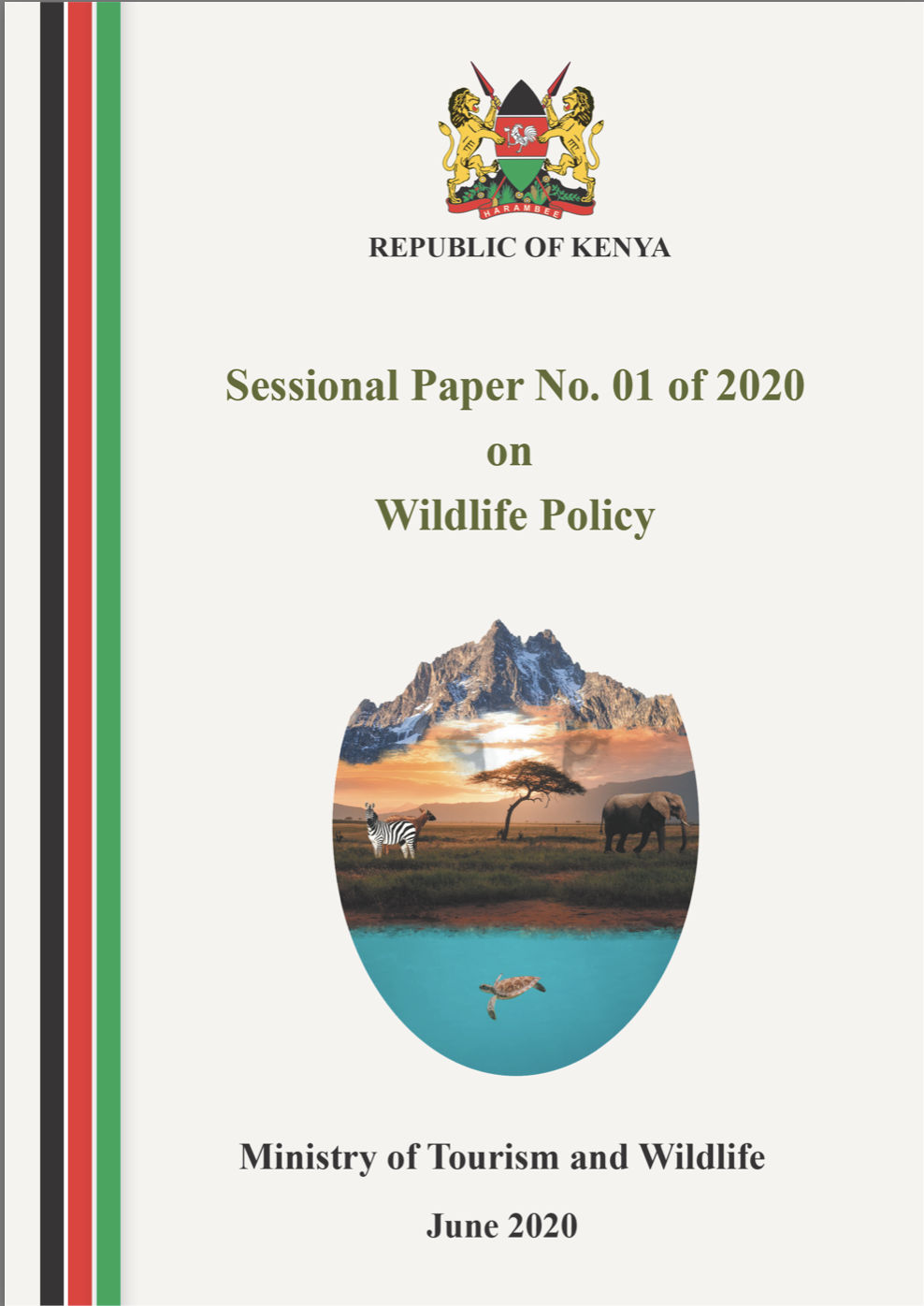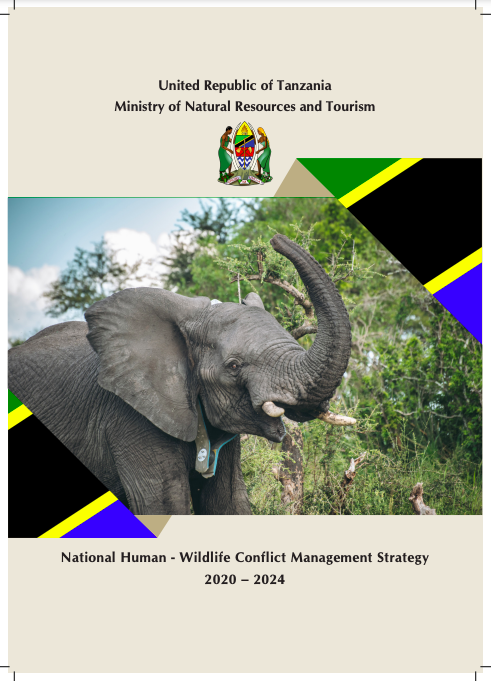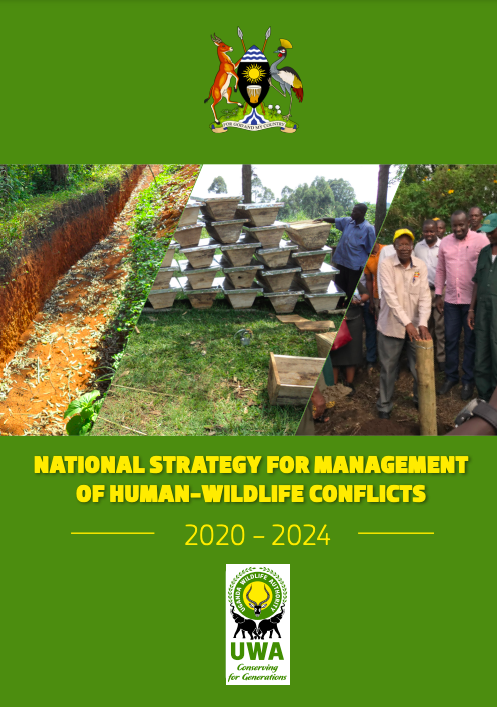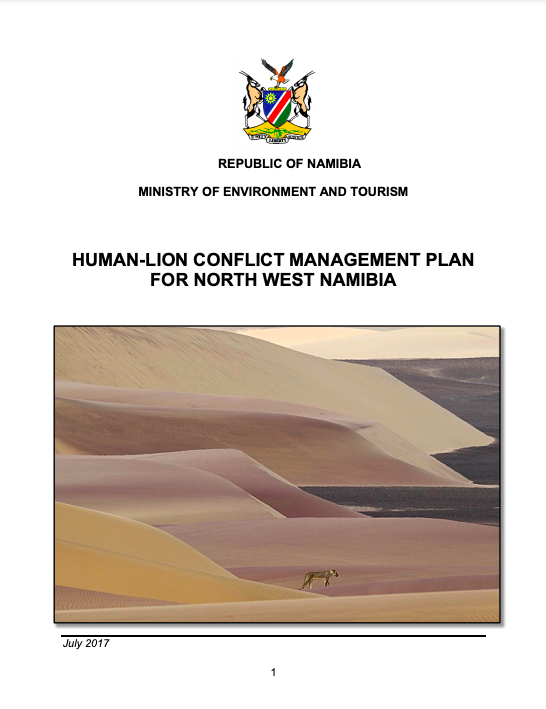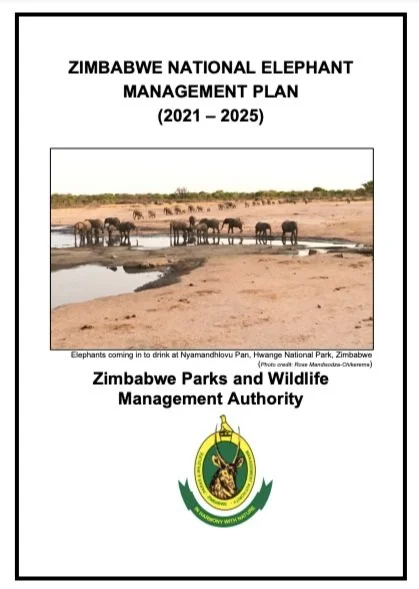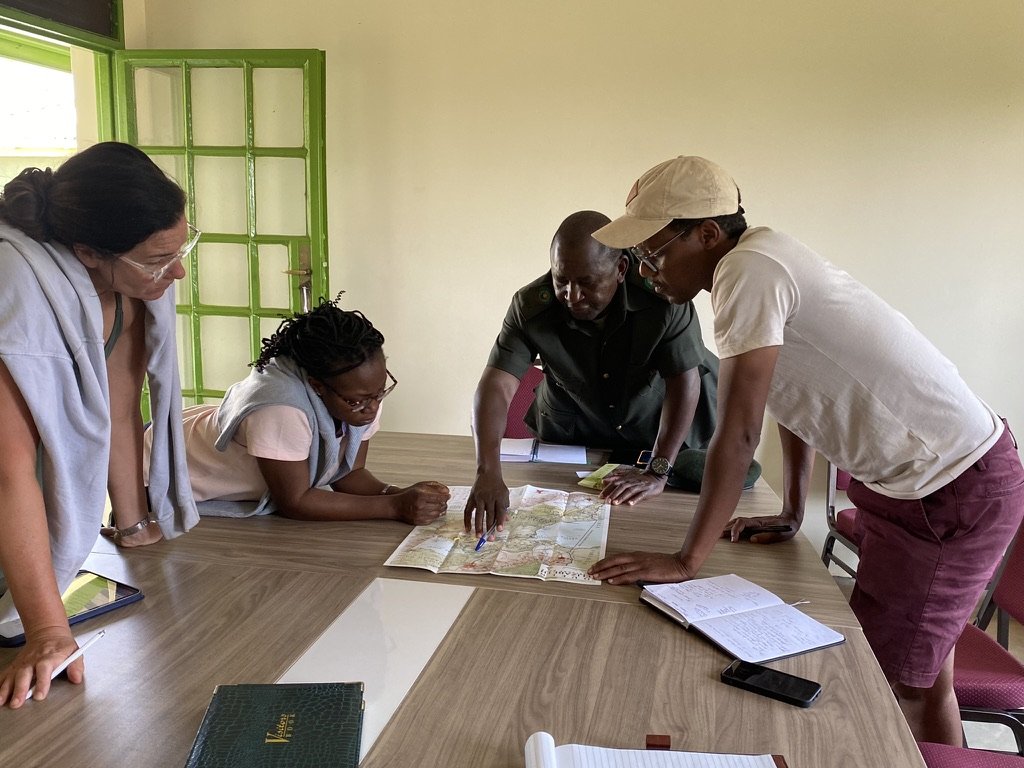
Tools for Policymakers
This knowledge hub aims to provide policymakers with research, data, tools and concrete recommendations to help improve the management and mitigation of Human-Wildlife Conflict and promote co-existence, in Eastern Africa. It does not only showcase existing resources focused on the region, but gathers policies from a wide range of countries across the continent.
Africa
Eastern Africa
Kenya
Sessional Paper No. 01 of 2020 on Wildlife Policy
-
This policy lays out a broad range of principles, mesures and actions to be pursued to achieve a sustainable wildlife management in Kenya that enhances and benefits stakeholder engagement, including in relation to HWC. This is an update to Kenya's existing policy on the management and preservation of wildlife.
-
Author: Ministry of Tourism and Wildlife (MTW), Republic of Kenya
Date: June 2020
Kenya
National Elephant Action Plan for Kenya 2023-2032
-
This National Elephant Action Plan (NEAP) for Kenya (2022-2031) presents a pragmatic, cohesive comprehensive strategy that is necessary for conservation of Kenyas elephant population and is aligned with African Elephant Action Plans (AEAP).
-
Author: Ministry of Tourism, Wildlife and Heritage; Kenya Wildlife Wervice (KWS)
Date: 2022
Kenya
National Human-Wildlife Coexistence (HWC) Strategy and Action Plan 2024-2033
-
Launched on March 4, 2024, this policy aims to create a holistic strategy strategy aiming at fostering sustainable wildlife conservation while effectively mitigating human-wildlife conflicts. It includes, among other mechanisms, an insurance framework for compensating individuals and their kins who were affected by "problem-animals". This compensation scheme aims to prevent retaliatory killings from humans leading to the destruction of wildlife.
-
Author: Ministry of Tourism and Wildlife (MTW); Kenya Wildlife Service (KWS)
Date: January 2024
Kenya
National Spatial Plan 2015-2045: An Integrated Spatial Plan for Balanced and Sustainable National Development
-
The National Spatial Plan supports the implementation of strategic national projects specifically the flagship projects spelt out under Kenya Vision 2030 by indicating their spatial locations and providing a framework for absorbing the spatial impacts of these projects. It provides a coordinating framework for sectoral planning which has been lacking in the country and it aims to address the disconnect that has existed for a long time between physical and economic planning. This is expected to result in more prudent use of the country‟s scarce resources as the Plan provides a platform for prioritization of programmes and projects within the implementation mechanism.
-
Author: Ministry of Lands and Physical Planning: Department of Physical Planning
Date: 2016
Mozambique
National Strategy and Action Plan of Biological Diversity of Mozambique (2015-2035)
-
The Mozambique National Strategy and Action Plan for Conservation of Biological Diversity was first published in 2003, the present strategy was adopted in compliance of decision adopted in COP10 which required member states to review and update their NBSAPs. This plan provides an overview of the general importance of biodiversity not only for national economy, but also gives us the status of conservation in Mozambique, its trends, treats and its impacts for human well-being, underlining the achievements, challenges and perspectives presented as goals for the next twenty years.
Regarding human wildlife conflict, the paper identifies human activities as the direct causes of changes in land use which may threaten biodiversity in Mozambique. Various targets acknowledge the impact of human activity on wildlife and aim to mitigate their impacts to prevent degradation of biodiversity.
-
Author: Ministry of Land, Environment and Rural Development, Republic of Mozambique
Date: May 2016
Tanzania
National Human-Wildlife Conflict Management Strategy 2020-2024
-
This policy is a strategy that aims to enhance, foster, and sustain human-wildlife coexistence over the long-term throughout the country in ways that recognize the security and development needs of local communities and the value of biodiversity conservation to the nation, and promotes self-reliance and evidence-based short-term and long-term solutions.
The first phase of the roadmap focuses on large carnivores, elephants, hippos and crocodiles.
-
Author: United Republic of Tanzania, Ministry of Natural Resources and Tourism
Date: 2020
Rwanda
Republic of Rwanda National Biodiversity Strategy and Action Plan
-
The revised National Biodiversity Strategy and Action Plan (NBSAP) is a key tool for the implementation of the Convention on Biological Diversity (CBD) objectives and the Aichi targets. The revised NBSAP lists 5 objectives and 19 national targets that aim to stop biodiversity loss and increase the economic benefits associated with the biological resources utilization and ecosystems services.
Section 3.1.7 covers the topic of human wildlife conflict as a cause of biodiversity loss, detailing how it has affected Rwanda in protected areas and has been exacerbated by the lack of buffer zones around some of those areas. Goals target this issue by encouraging an environment in which humans use natural resources sustainably and involving communities in the process of biodiversity restoration.
-
Author: Ministry of Land, Environment and Rural Development, Republic of Mozambique
Date: December 2016
Uganda
National Rhino Conservation and Management Strategy for Uganda 2018-2028
-
The Government of Uganda developed this ten (10) year National Rhino Conservation and Management Strategy to among others provide guidance and direction for rhino conservation and management, align with the relevant policy and legal frameworks in place and seek support and partnerships locally, regionally and globally for rhino conservation work in the country.
-
Author: Government of Uganda, the
Uganda Wildlife Authority (UWA)
Date of publication: 2018
Uganda
National Strategy for Management of Human-Wildlife Conflicts
-
This policy provides an elaborate mechanism for resolving conflicts by strengthening the community conservation function through the provision of adequate funding, enhancing staffing and capacity development and cooperation with other line departments, institutions and agencies and implementation of the wildlife compensation scheme.
Indeed, The Uganga Wildlife Authority (UWA) identified the need to review and develop a comprehensive formal strategy to guide effective implementation of various innovative interventions to mitigate conflicts.The policy/strategy also highlights the need to streamline cross-border cooperation, strengthen the capacity of district local governments and local communities to mitigate/manage conflicts, promote alter- native livelihood projects, raise public awareness and promote research and monitoring.
-
Author: Uganda Wildlife Authority
Date: 2020
South Sudan
Republic of South Sudan National Biodiversity Strategy and Action Plan (2018-2027)
-
The South Sudan NBSAP has been developed as the principle instrument for undertaking biodiversity management and conservation in the country, and as a framework for optimally integrating the management of the country's vast biodiversity resources into national economic prosperity and social welfare targets of the Vision 2040. It has been divided into seven strategic objectives, although a wider three-dimensional focus emerges comprising of establishing coordination and capacity development, implementing biodiversity management actions and resource mobilisations, and knowledge management.
Human wildlife conflict is described as widespread in National Parks in South Sudan, where animals (commonly elephants, hippos and crocodiles) are in conflict with local people. For example, incidences of crocodiles killing people, cattle and goats, as well as hippos and elephants raiding people's food crops.
-
Author: Ministry of Environment and Forestry, Government of the Republic of South Sudan
Date: November 2019
Southern Africa
Botswana
Botswana Elephant Management Plan and Action Plan 2021-2026
-
This policy aims to conserve optimal elephant populations while ensuring the maintenance of habitats and biodiversity, promoting the contribution of elephants to local economies and to National development while minimising their negative impacts on rural livelihoods.
-
Author: Ministry of Environment, Natural Resources Conservation and Tourism
March 2021
Angola
National Biodiversity Strategy and Action Plan 2019-2025
-
The National Biodiversity Strategy are guidelines that will guide the actions of conservation, preservation and protection of Biodiversity in Angola in the next seven years (2019-2025). In this context, it is proposed as a Vision that Angolan Biodiversity should be valued, converted, restored and wisely used, maintaining ecosystem services, maintaining a healthy and unpolluted environment and sharing essential benefits for all people. and as a general objective, take effective measures to halt the loss of biodiversity, to ensure that by 2025 ecosystems are resilient and continue to provide essential services, thus contributing to the eradication of extreme poverty and the well-being of our population.
The Plan recognises human-wildlife conflict as a challenge in the conservation of biodiversity in Angola and states the mitigation of the silting up of rivers and human-wildlife conflict as an action to be developed by 2025.
-
Author: Governo de Angola
February 2020
Botswana
National Biodiversity Strategy and Action Plan 2016
-
Botswana submitted its first National Biodiversity Strategy and Action Plan (NBSAP) in 2004, this is the third revision which has been updated to bring it in line with the CBD's own revised Strategic Plan and the Aichi Targets. It is founded on three objectives, which are: the conservation of biological diversity, the sustainable use of its components and the fair and equitable sharing of the benefits arising out of the utilization of genetic resources.
The plan explicitly refers to human-wildlife conflict as a main impact of habitat destruction and changes in land use, before targeting its negative implications through specific strategic actions to be completed across the next decade.
-
Author: Department of Environmental Affairs, Government of Botswana,
March 2016
Namibia
Human-Lion Conflict Management Plan for North West Namibia
-
This is a policy that seeks to provide a framework for addressing Human-Lion conflict efficiently and effectively in North Western Namibia. It contributes to the revised National Policy on Human Wildlife Conflict Management and follows its guidelines.
-
Author: Republic of Namibia, Ministry of Environment & Tourism
Date of publication: 2017
Namibia
Measures and Guidelines For Implementation of the Revised National Policy on Human Wildlife Conflict Management (November 2018)
-
In April 2018, Cabinet approved the Revised National Policy on Human Wildlife Conflict Management (2018-2027). This is a revision of the 2009 National Policy on Human Wildlife Conflict Management which has been updated to reflect changing circumstances, new thinking regarding HWC and the results of experience in addressing HWC management issues on the ground over the past eight years. The revised Policy provides a framework for addressing HWC efficiently and effectively in order to promote both biodiversity conservation as well as human development.
-
Author: Republic of Namibia, Ministry of Environment & Tourism
Date of publication: 2018
Namibia
Revised National Policy on Human-Wildlife Conflict Management 2018-2027
-
The policy aims to update the 2009 framework for addressing human-wildlife conflict in a way that recognises the rights and development needs of local communities, recognises the need to promote biodiversity conversation, promotes self-reliance and ensures that decision-making is quick, efficient and based on the best available information.
-
Author: Republic of Namibia, Ministry of Environment & Tourism
Date of publication: 2018
Zimbabwe
Zimbabwe National Elephant Management Plan (2021-2025)
-
The policy's long-term vision is to conserve elephants at levels that will enable them to contribute to the conservation of biodiversity, national development and Zimbabwe’s cultural heritage. Its 3 main targets are the following: (1) To maintain at least four demographically and genetically viable elephant populations in Zimbabwe; (2) To maintain or increase core protected range of elephant in Zimbabwe; (3) To maintain numbers / densities of elephant at levels that do not adversely impact on biodiversity conservation goals while contributing to economically viable and sustainable wildlife-based land uses in Zimbabwe.
-
Author: Ministry of Environment, Climate and Wildlife Management; Zimbabwe Parks and Wildlife Management Authority (ZPWMA)
Date: 2021
Western Africa
Guinea-Bissau
Guinea-Bissau Strategy and National Action Plan for the Biodiversity (2015-2020)
-
This document consists of Guinea-Bissau's National Biodiversity Strategy and Action Plan (NBSAP) which was revised and updated following previous Conference of CBD Parties (COPs). Goals to restore biodiversity in the country have been set over a five-year period from 2015 to 2020, specifying actions/measures, indicators of success, actors involved, timelines, and estimated costs.
Regarding human wildlife conflict, Goal 79 in particular explicitly mentions the resolution of conflict between wild animals and humans through consolidation of integrated management of protected areas
-
Author: The Republic of Guinea-Bissau, The State's General Office of the Environment
Date: May 2016
International
Kavango Zambezi Transfrontier Area - KAZA TFCA states
KAZA Policy Brief, Elephant Movements and Connectivity in the Kavango Zambezi Transfrontier Area (KAZA TFCA)
-
This document provides an overview of the current data and knowledge that KESWG has regarding elephant movements and connectivity in the Kavango Zambezi Transfrontier Area (KAZA TFCA), including areas in Angola, Botswana, Namibia, Zambia and Zimbabwe. It provides recommendations for securing and maintaining corridors at different scales to ensure persistence of landscape connectivity for elephants and other migratory wildlife.
-
Author: KAZA Elephant Sub Working Group (KESWG)
Date: 2023
United Nations Environment Program (UNEP)
Kunming-Montreal Global Biodiversity Framework (GBF)
-
The Kunming-Montreal Global Biodiversity Framework seeks to respond to the Global Assessment Report of Biodiversity and Ecosystem Services issued by the Intergovernmental Science-Policy Platform on Biodiversity and Ecosystem Services (IPBES), 4 the fifth edition of the Global Biodiversity Outlook, 5 and many other scientific documents that provide ample evidence that, despite ongoing efforts, biodiversity is deteriorating worldwide at rates unprecedented in human history.
The Kunming-Montreal Global Biodiversity Framework, building on the Strategic Plan for Biodiversity 2011–2020, its achievements, gaps, and lessons learned, and the experience and achievements of other relevant multilateral environmental agreements, sets out an ambitious plan to implement broadbased action to bring about a transformation in our societies’ relationship with biodiversity by 2030, in line with the 2030 Agenda for Sustainable Development and its Sustainable Development Goals, and ensure that, by 2050, the shared vision of living in harmony with nature is fulfilled.
-
Author: DECISION ADOPTED BY THE CONFERENCE OF THE PARTIES TO THE CONVENTION ON BIOLOGICAL DIVERSITY.
Date of publication: 2022
Submit a policy document.
Please, fill this contact from if you wish to share a national policy document addressing the management and mitigation of human-wildlife conflict that is not already available on this page. Additionally, do reach out if you wish to share anything else that is relevant to the work of the HWC Research Network.


